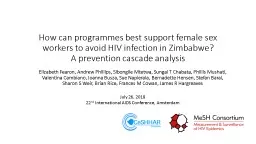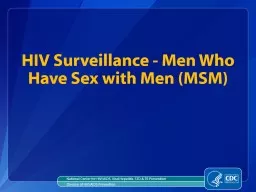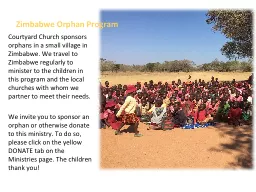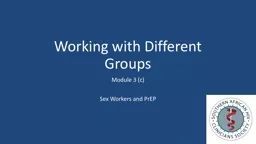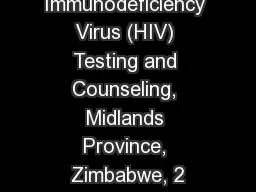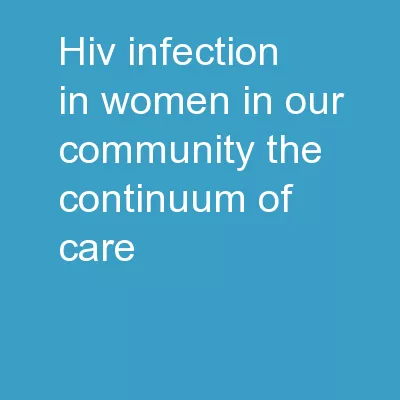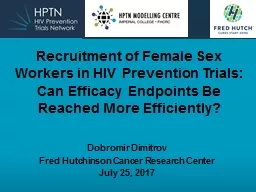PPT-How can programmes best support female sex workers to avoid HIV infection in Zimbabwe?
Author : faustina-dinatale | Published Date : 2019-03-12
A prevention cascade analysis Elizabeth Fearon Andrew Phillips Sibongile Mtetwa Sungai T Chabata Phillis Mushati Valentina Cambiano Joanna Busza Sue
Presentation Embed Code
Download Presentation
Download Presentation The PPT/PDF document "How can programmes best support female..." is the property of its rightful owner. Permission is granted to download and print the materials on this website for personal, non-commercial use only, and to display it on your personal computer provided you do not modify the materials and that you retain all copyright notices contained in the materials. By downloading content from our website, you accept the terms of this agreement.
How can programmes best support female sex workers to avoid HIV infection in Zimbabwe?: Transcript
Download Rules Of Document
"How can programmes best support female sex workers to avoid HIV infection in Zimbabwe?"The content belongs to its owner. You may download and print it for personal use, without modification, and keep all copyright notices. By downloading, you agree to these terms.
Related Documents

